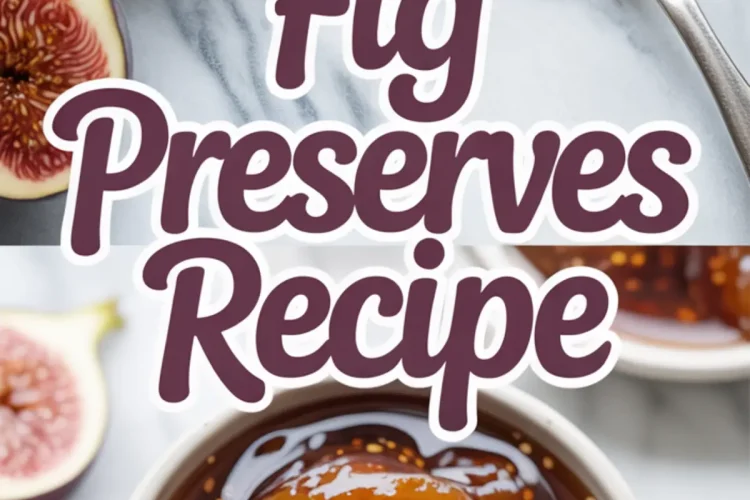You don’t need fancy ingredients to make a fig preserve that tastes like it came from a farmhouse kitchen. What you do need is patience, ripe figs, and a steady heat.
You’ll learn exactly how to turn fresh figs into a glossy preserve that keeps their shape and lets their natural flavor shine. You’ll see how to store it safely, when to eat it, and why I keep a jar of this on my shelf long after fig season ends.
Fig preserves fill a gap in many kitchens, especially for those wondering what to do with dried figs or those soft fresh ones from the market. This recipe skips pectin, skips fuss, and focuses on flavor. It’s one I come back to year after year.
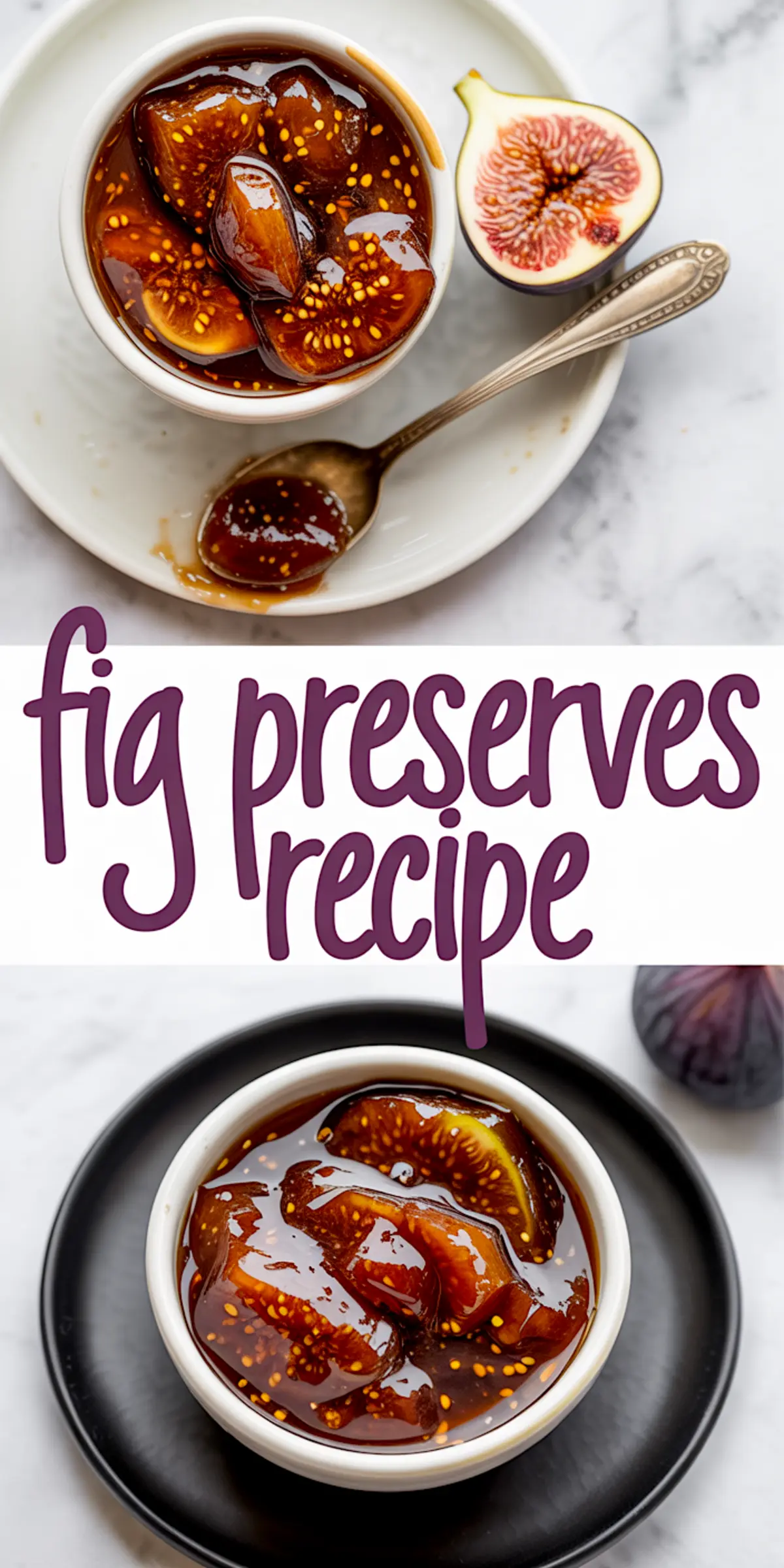
Start With the Right Figs
Ripe figs matter more than anything else in this recipe. Black Mission or Brown Turkey both work well. You want figs that yield slightly when pressed but don’t collapse.

Cut off the stems, and leave the skins on. They soften as they cook, adding thickness and texture to the finished jar. If you’re staring down a bowl of figs and wondering if you have time to can them before they spoil, this is the way to go. Quick prep, long simmer, big payoff.
If you’re interested in baking with figs instead, you might try this Fig Cake which pairs beautifully with strong tea or coffee.
Add Lemon for Balance
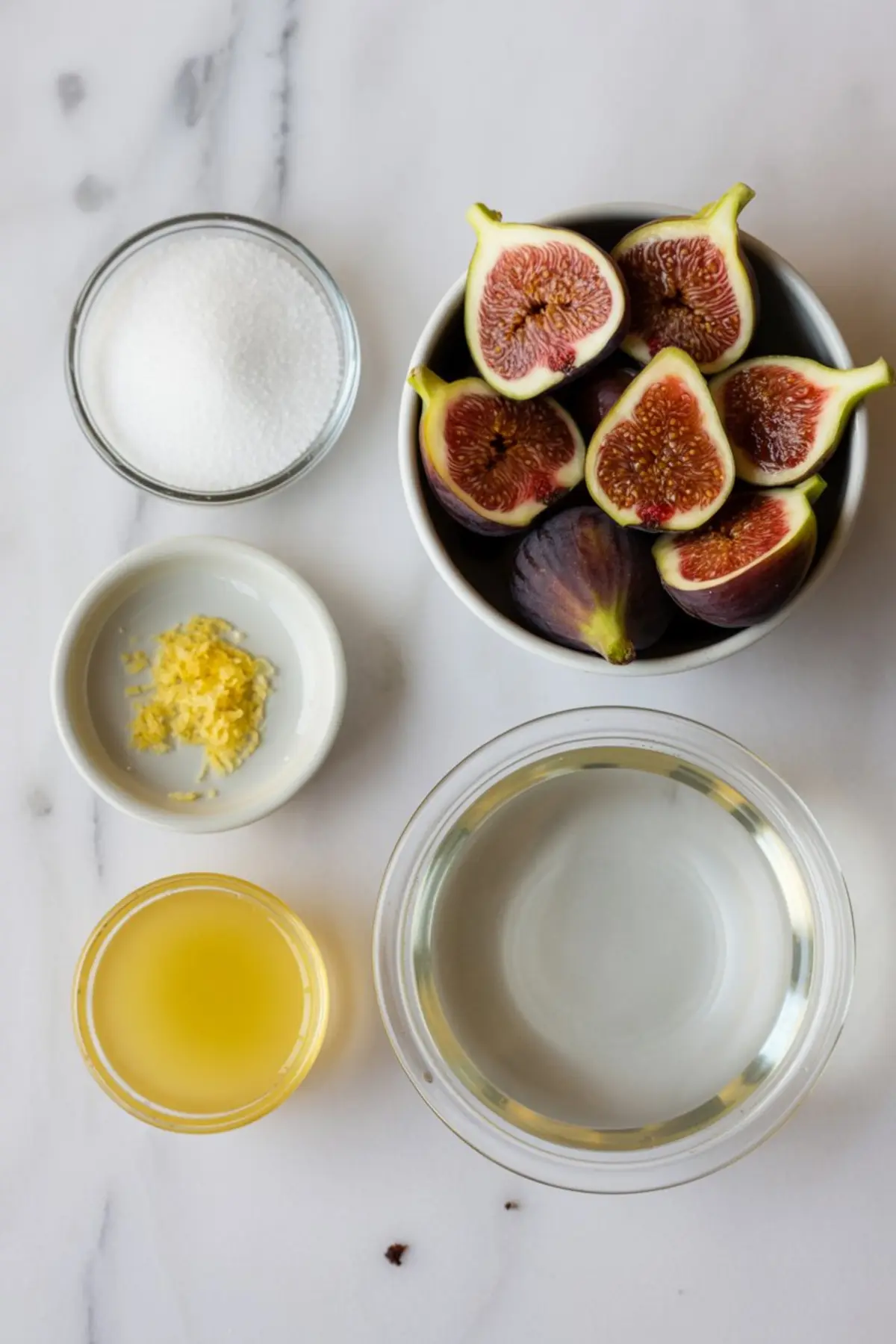
This isn’t just fruit and sugar. Fresh lemon juice keeps the mixture from turning flat or overly sweet. It also helps the syrup thicken without adding anything artificial.
I include lemon zest too. It brightens the flavor and gives the final product a cleaner finish. The zest isn’t required, but it makes a difference. Once I started adding it, I never went back.
In my notes, I’ve found that 1/4 cup of water softens the initial heat and prevents sticking. It gives you a little room to simmer slowly without scorching.
Macering Helps but Isn’t Mandatory
If you have an hour or two to let the figs rest in sugar and lemon before cooking, do it. This step draws out juice, thickens the syrup, and gives the figs time to relax before the simmer.
If you’re in a hurry, skip it. The preserves will still turn out well. I’ve done it both ways. I prefer the macerated batch, but last-minute jars for weekend cheese boards don’t always allow for it.
You can also use this approach if you’re planning fig chutney. Macerating works just as well there too.
How to Simmer Without Losing Texture
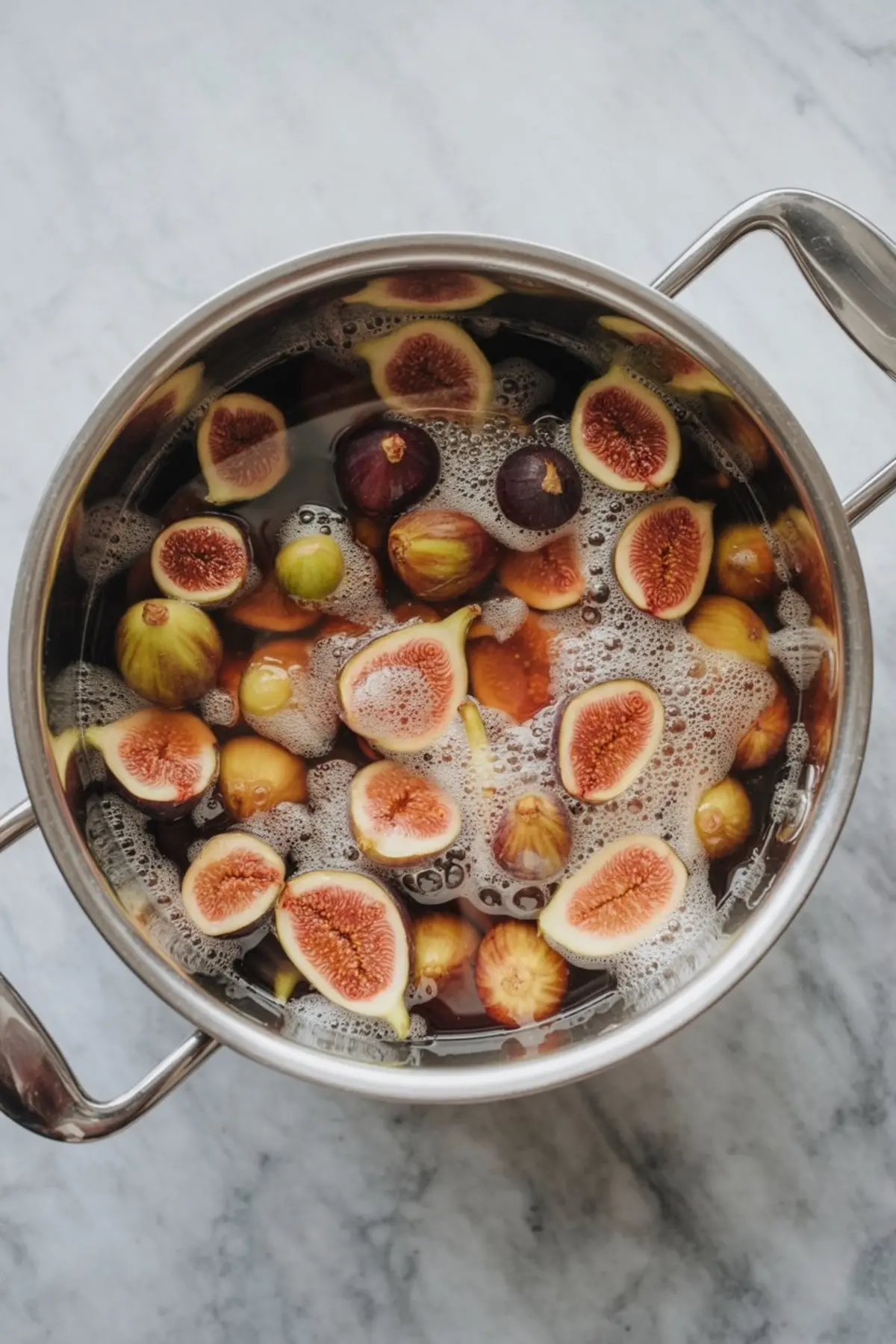
Use a wide, heavy-bottomed pot and keep the heat low. This isn’t a fast jam. Stir gently every few minutes. The syrup will reduce, and the figs will soften and deepen in color.
Don’t walk away from the stove too long. Even with low heat, the sugar can stick if it isn’t moved now and then. I always leave a spoon resting on the side of the pot as a reminder.
For another classic fruit spread, try this Strawberry Jam Recipe next time fresh berries are on hand.
How to Tell When the Preserves Are Done
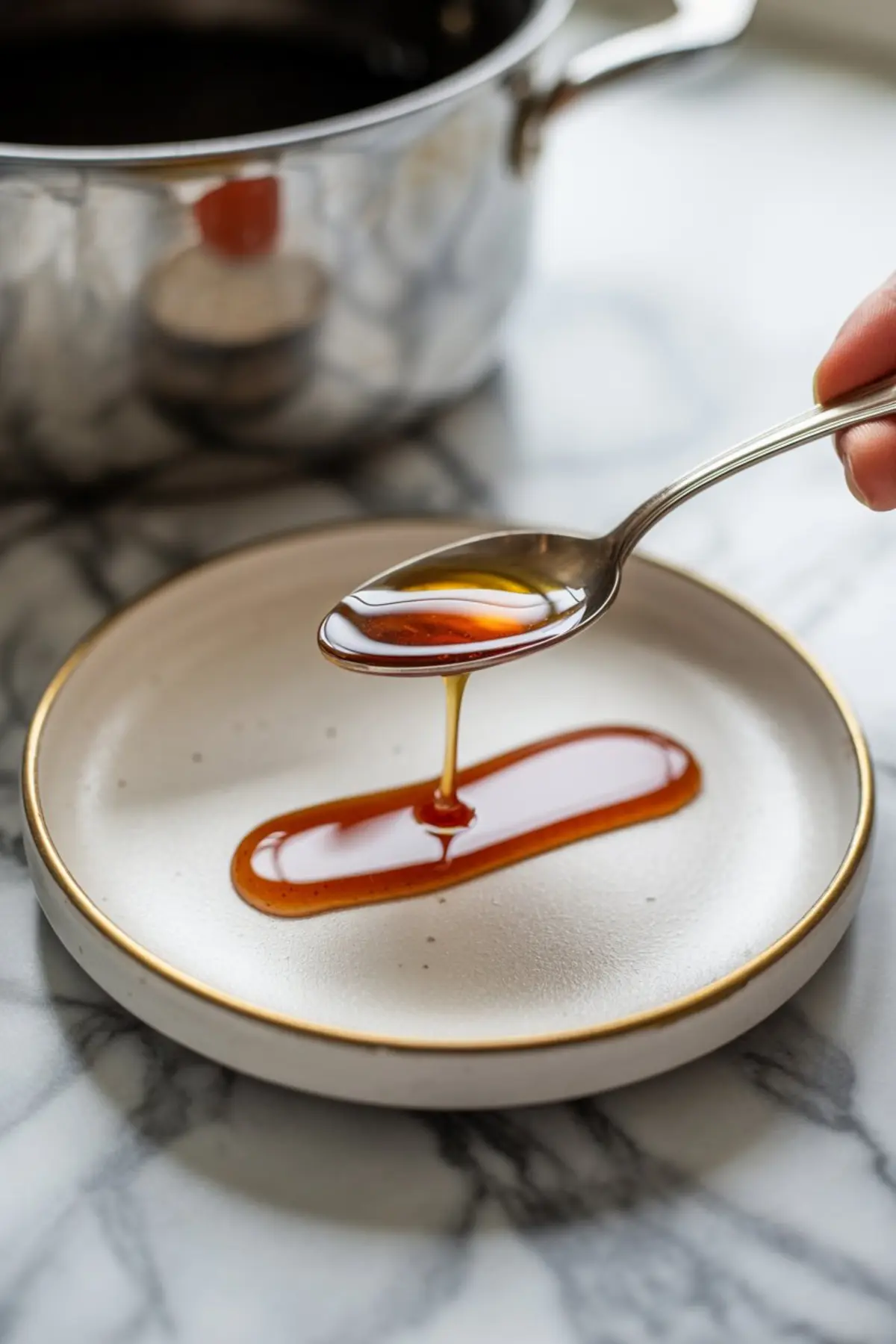
I use the plate test. Place a spoonful of syrup on a cold plate, let it cool, and drag your finger through it. If the line holds, the preserves are ready.
If it slides back together, cook a bit longer. The syrup should look thick and glossy, with figs intact but soft.
This same method works if you’re experimenting with other fig spread recipes or looking into canning figs recipes for longer storage.
How to Can and Store Fig Preserves Safely
Spoon the hot mixture into sterilized jars, leaving a little room at the top. Wipe the rims clean, screw on the lids, and either refrigerate or process in a boiling water bath.
If you want to keep them shelf-stable, that water bath is necessary. Ten minutes in boiling water, then let the jars cool undisturbed for a full day.
Open jars go in the fridge. I use mine within three weeks, usually on toast, over brie, or folded into cake batters.
This Blueberry Jam Recipe follows a similar balance of sweetness and fruit, if you’re after more easy preserve ideas.
Fresh vs. Dried Figs: What Changes?
I’ve tested this with both. Fresh figs break down more easily and result in a soft, spoonable texture. Dried figs hold their shape more, and need extra soaking or maceration to blend into the syrup.
If you’re asking yourself, “Dried figs—what to do with them?”, start by soaking them in lemon water overnight, then follow the same steps. The flavor deepens, but the texture stays chewier.
If you love fruit-forward preserves, you might also enjoy the depth in this Blackberry Jam. It holds its shape well and pairs nicely with yogurt.
Ideas for Serving Fig Preserves
This preserve works far beyond toast. You can spoon it into thumbprint cookies, swirl it through yogurt, or layer it under a sharp cheese like Manchego or aged cheddar.
For fig jam appetizers, pair with soft goat cheese on crostini. I’ve also used it as a glaze for roasted chicken. Just warm a spoonful with olive oil and a splash of vinegar.
If you like savory-sweet ideas, you may want to try making a fig chutney recipe using a similar base.
Wrap It Up and Pin for Later
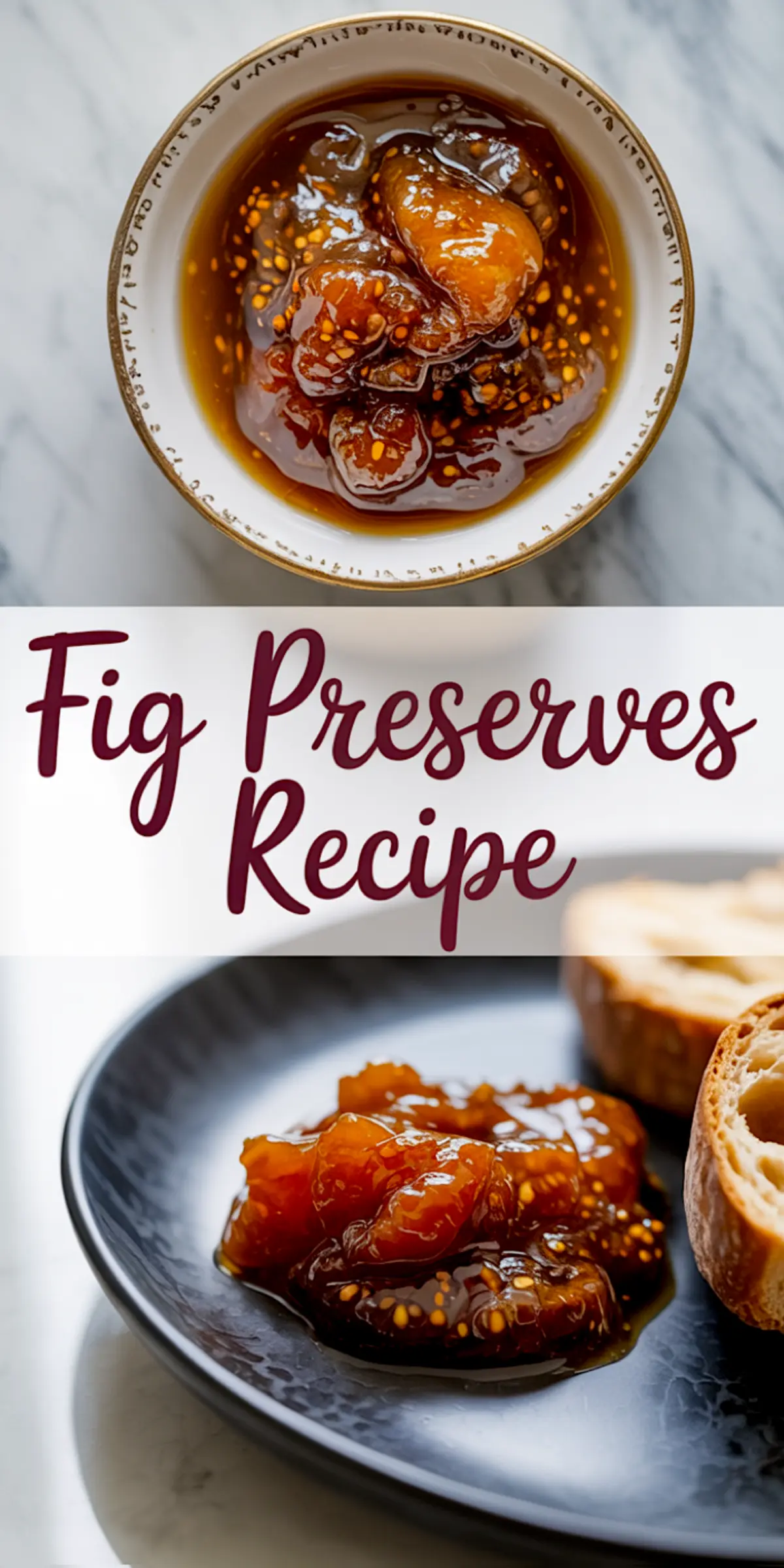
Homemade fig preserves bring out the best in seasonal fruit without extra ingredients. They store well, spread easily, and offer a taste of summer long after the last fig has been picked.
Save this recipe to your board and come back to it whenever figs show up at the market.
If you try this at home, I’d love to hear how it turned out. Share your tweaks, tips, or questions in the comments below.
Fig Preserves Recipe
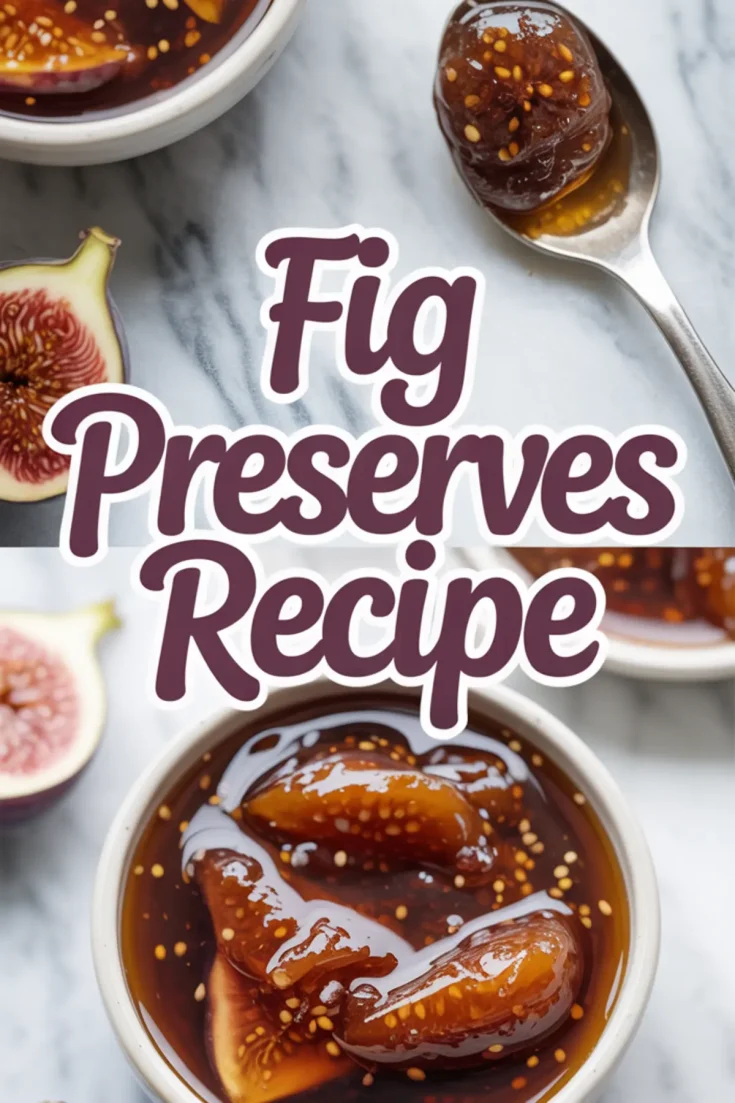
Old-fashioned fig preserves highlight the natural sweetness and texture of fresh figs without added pectin or preservatives. Simmered gently with lemon juice and sugar, the figs break down into a thick, amber-hued preserve that holds its shape and flavor. These preserves pair well with toast, cheese, and baked goods and are simple to prepare with a few basic ingredients.
Ingredients
- 2 lbs fresh ripe figs (preferably Black Mission or Brown Turkey)
- 2 cups granulated sugar
- 1/4 cup fresh lemon juice (about 2 small lemons)
- 1 tbsp lemon zest (optional but highly recommended)
- 1/4 cup water
Instructions
- PREPARE THE FIGS: Rinse the figs gently under cool water and pat them dry with a clean towel. Trim off the stems, then slice the figs in half. If the figs are large, cut them into quarters. Leave the skins on, as they will soften during cooking and add texture to the preserves.
- COMBINE THE INGREDIENTS: In a large non-reactive pot such as stainless steel or enameled cast iron, add the figs, sugar, lemon juice, lemon zest, and water. Use a large spoon to stir gently until the figs are evenly coated with sugar and the mixture is combined.
- LET THE MIXTURE MACERATE (OPTIONAL): For improved texture and flavor, allow the mixture to sit at room temperature for 1 to 2 hours. This step draws out the fig juices and helps the preserves thicken more naturally when cooked.
- COOK THE PRESERVES: Place the pot over medium heat and bring the mixture to a gentle simmer, stirring occasionally until the sugar fully dissolves. Reduce the heat to low and cook uncovered for 45 to 60 minutes, stirring frequently to prevent sticking. The figs should soften, and the syrup will thicken visibly as it reduces.
- CHECK FOR DONENESS: To test if the preserves are ready, place a small spoonful of syrup onto a chilled plate. Let it sit for a few seconds, then run your finger through the middle. If it leaves a clear path that doesn’t fill back in, the preserves are done. If the syrup runs back together, continue simmering and test again after a few minutes.
- FILL THE JARS: Ladle the hot preserves into clean, sterilized glass jars, leaving about 1/4-inch of headspace at the top. Wipe the jar rims with a damp cloth to ensure a good seal. Apply the lids and close tightly. For short-term storage, refrigerate the jars once cooled. For shelf-stable storage, process the filled jars in a boiling water bath for 10 minutes, then let cool undisturbed for 12 to 24 hours.
Notes
For best results, use figs that are ripe but still firm. The optional lemon zest enhances the citrus brightness and complements the figs' natural sweetness. Store opened jars in the refrigerator and use within 3 weeks.
Nutrition Information
Yield
3Serving Size
1Amount Per Serving Calories 745Total Fat 1gSaturated Fat 0gTrans Fat 0gUnsaturated Fat 1gCholesterol 0mgSodium 5mgCarbohydrates 193gFiber 9gSugar 183gProtein 2g

